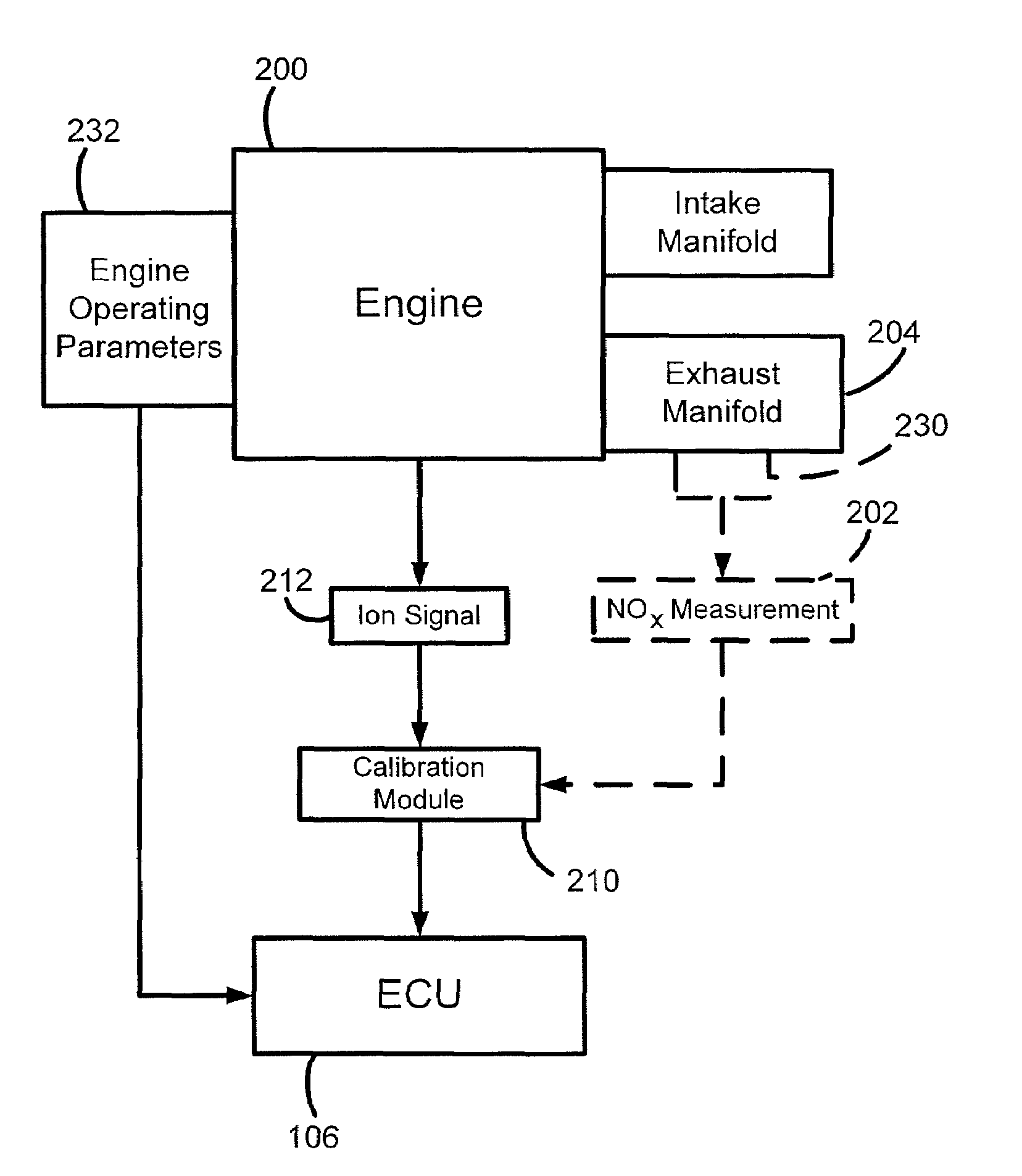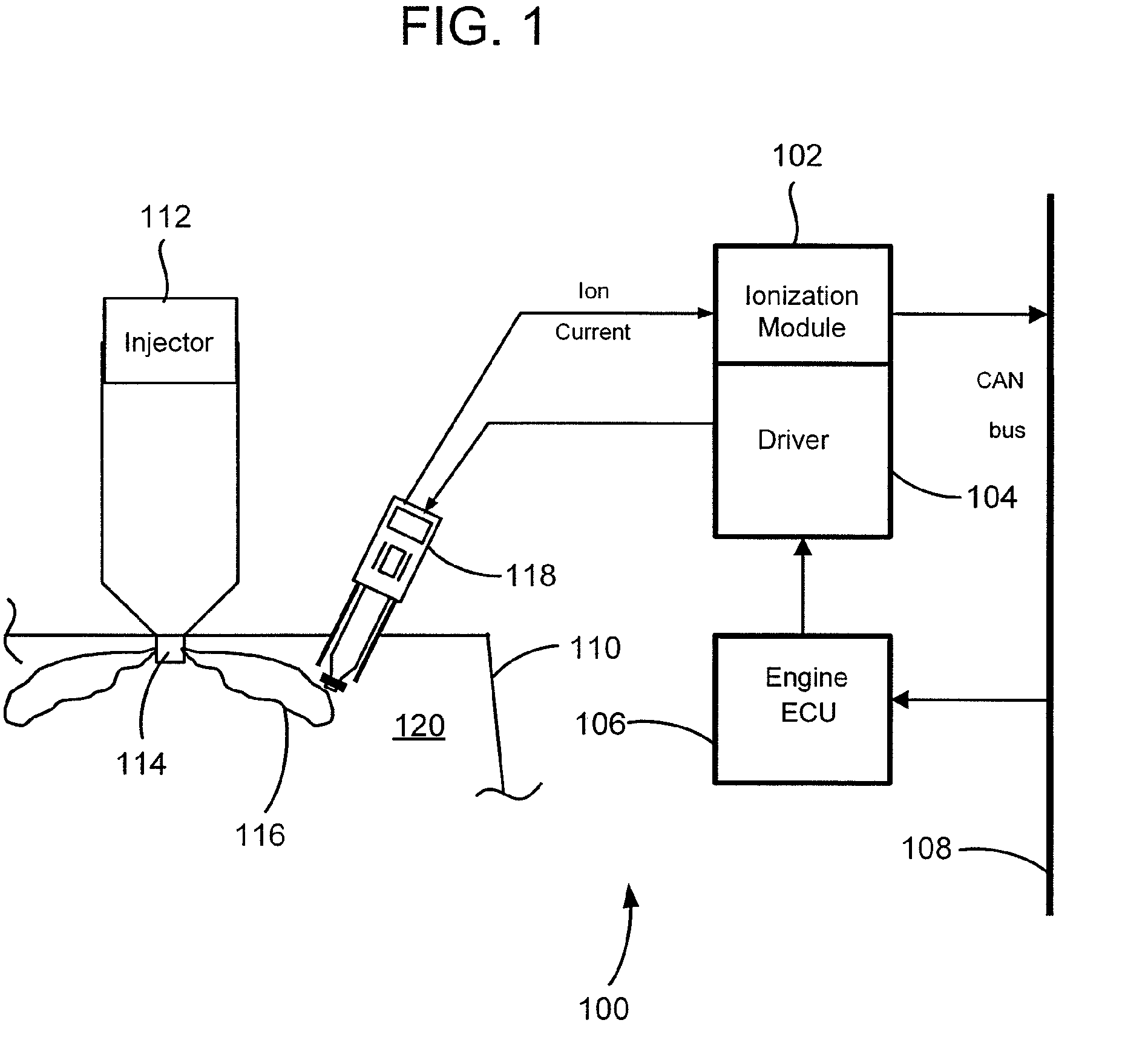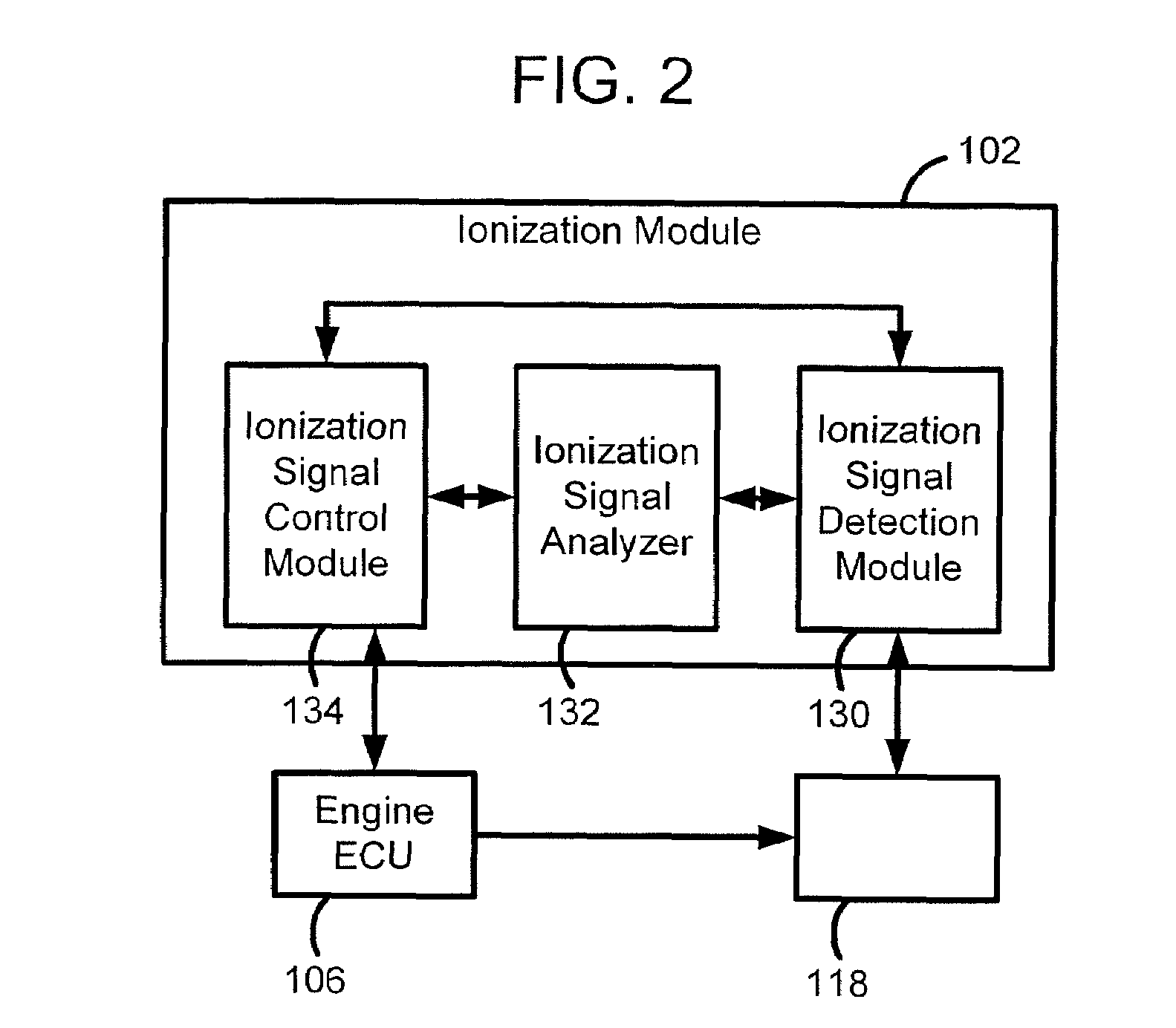Using ion current for in-cylinder NOx detection in diesel engines and their control
a technology of in-cylinder nox and ion current, which is applied in the direction of electrical control, instruments, brake systems, etc., can solve the problems of difficult to meet, difficult to achieve, and significant differences in the advantages and disadvantages of diesel and spark-ignited engines, so as to achieve the very low no/sub>x and particulate emissions level of typical diesel engines
- Summary
- Abstract
- Description
- Claims
- Application Information
AI Technical Summary
Benefits of technology
Problems solved by technology
Method used
Image
Examples
Embodiment Construction
[0023]The apparatus and method described herein determines NOx emissions based upon the ion current produced during the compression process in compression ignition engines of different designs while running on conventional, alternate, or renewable diesel fuel without requiring the use of an in-cylinder NOx sensor or NOx measurement in the exhaust.
[0024]Referring initially to FIG. 1, a exemplary system 100 in which the present apparatus and method operates is shown. The system includes an ionization module 102, a driver 104, an engine electronic control unit (ECU) 106, and a diesel engine. The ionization module 102 communicates with the ECU 106 and other modules via, for example, the CAN (Controller Area Network) bus 108. While the ionization module 102, the driver 104 and the engine control unit 106 are shown separately, it is recognized that the components 102, 104, 106 may be combined into a single module or be part of an engine controller having other inputs and outputs. The comp...
PUM
 Login to View More
Login to View More Abstract
Description
Claims
Application Information
 Login to View More
Login to View More - R&D
- Intellectual Property
- Life Sciences
- Materials
- Tech Scout
- Unparalleled Data Quality
- Higher Quality Content
- 60% Fewer Hallucinations
Browse by: Latest US Patents, China's latest patents, Technical Efficacy Thesaurus, Application Domain, Technology Topic, Popular Technical Reports.
© 2025 PatSnap. All rights reserved.Legal|Privacy policy|Modern Slavery Act Transparency Statement|Sitemap|About US| Contact US: help@patsnap.com



